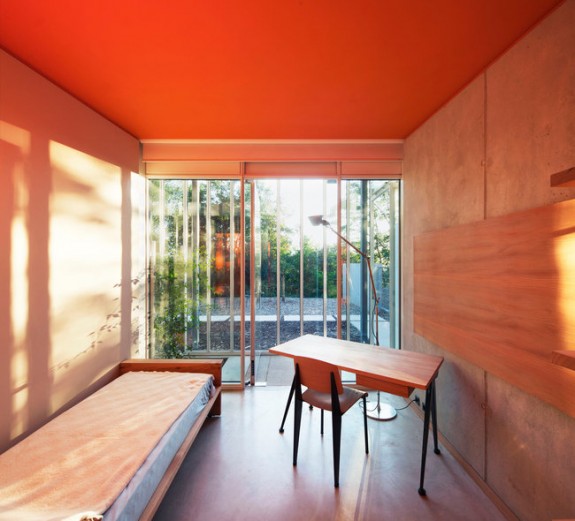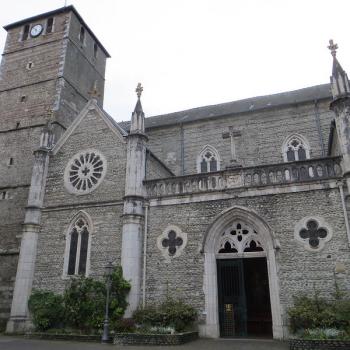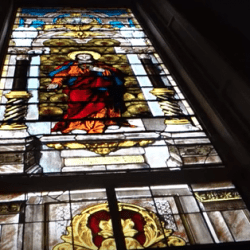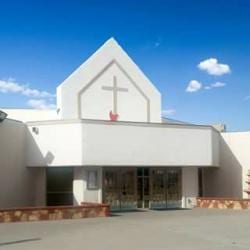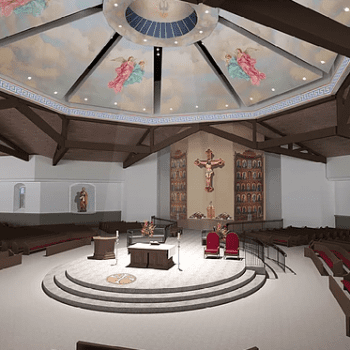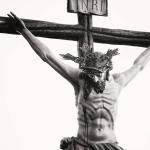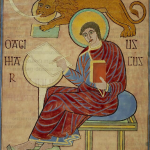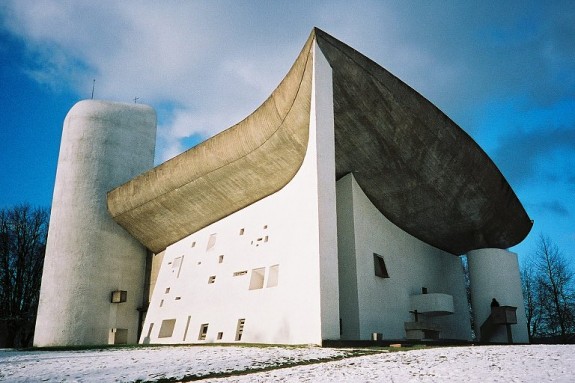
It’s considered by many a masterpiece — though that may be a matter of taste — but this celebrated and much-visited church in France has just gotten a new convent and visitor’s center. The New York Times architecture critic dropped by for a visit:
Completed in 1955, Le Corbusier’s hilltop chapel of Notre Dame du Haut in this hardscrabble patch of eastern France attracts some 100,000 supplicants each year, architectural and religious. If critics still sometimes blame Le Corbusier for inspiring generations of soulless, cookie-cutter housing projects and office parks, he remains the high priest of Modernism for singular works like this.
So it was predictable that a firestorm broke several years ago after plans circulated for a convent and new visitors’ center at the site of the chapel. Renzo Piano was the designer. Big-name colleagues like Richard Meier, Rafael Moneo and Cesar Pelli signed an online petition denouncing the $16 million project. The Fondation Le Corbusier, keeper of the architect’s flame, fumed.
Now the buildings have opened, with some landscaping (by Atelier Corajoud, a Paris firm) and a bit of tinkering yet to come. I took a train from Paris recently and found the chapel empty on a bright, crisp spring morning (a godsend), then visited the nuns. They are not quite a dozen elderly Poor Clares, lately moved from their home of 800 years at Besançon, 60 miles to the south, which they had sold to help pay for the new place. Cheerful in their light gray habits, the sisters were finishing lunch in the refectory around a handsome glazed courtyard open to a cloudless sky.
A few minor acoustic problems with the nuns’ concrete quarters aside, Mr. Piano and his team (Paul Vincent was the partner in charge at Renzo Piano Building Workshop) have created remarkably light and peaceful spaces that are virtually invisible from the chapel and gracefully connected to nature. Competing with Le Corbusier’s masterwork would have been a fool’s game and an affront, Mr. Piano clearly realized; spoiling it, a cinch. Doing neither, the additions insert new life onto the hill, and in the process remove a despised 1960s gatehouse that had obscured sight of the chapel from the town below.
Humility is a virtue. That’s the obvious lesson, but doing anything, even constructing a few self-effacing buildings at Ronchamp, is a big deal. Mr. Piano solved the riddle of adding to a site without appearing conspicuously to do so by burrowing into the brow of the hill, below the chapel, and inserting the convent and visitors’ center into the cuts, half buried, with zinc-and-glass facades to let in light. He placed the visitors’ center beside the old pilgrims’ path, which winds through woods from the valley all the way up the hill, and adjacent to a parking lot, which has been usefully trimmed.
Read more. And below is an image of one of the cells in the new convent, painted a bright orange.
